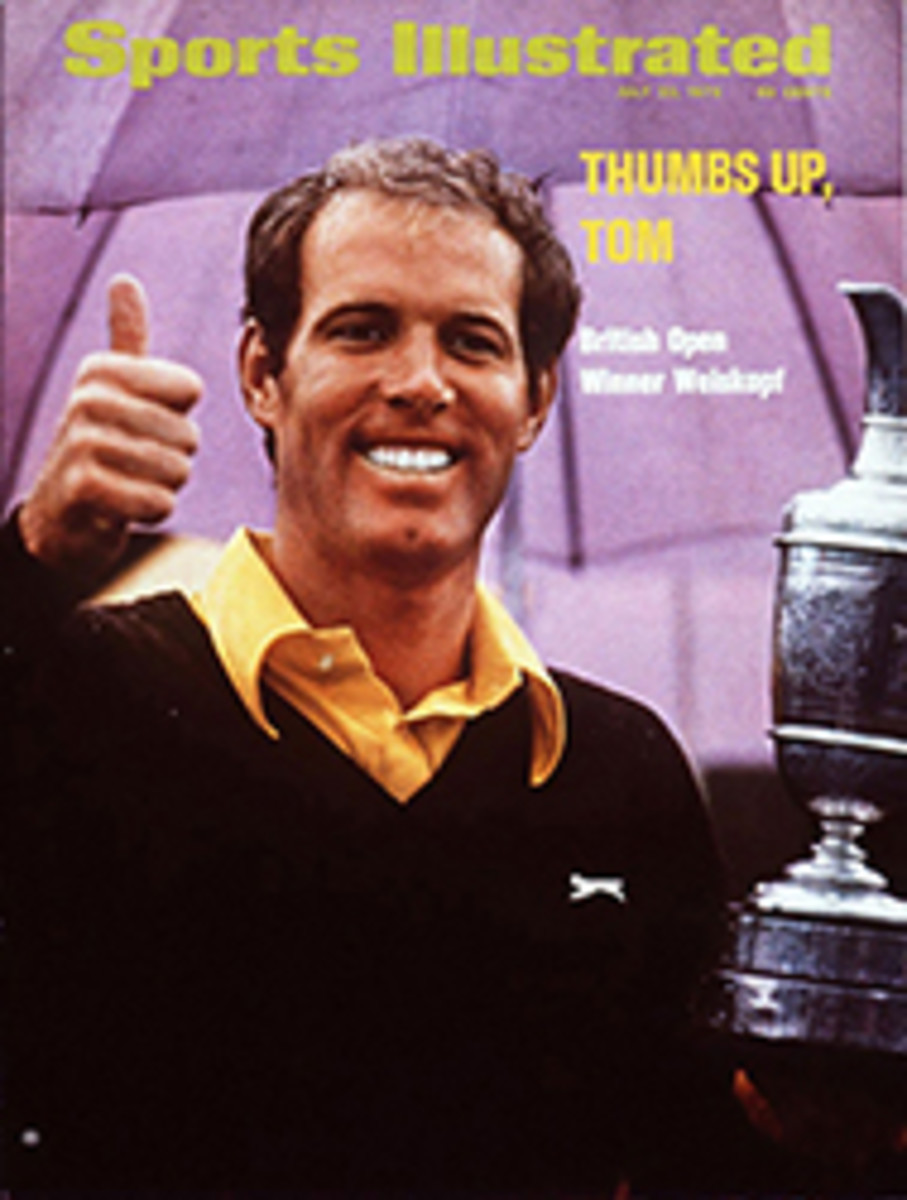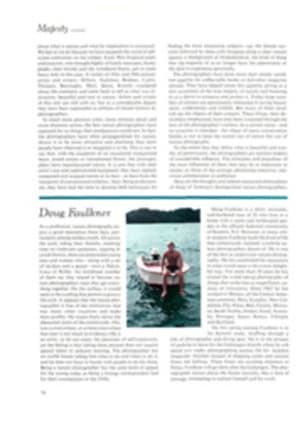
Another test for boxing on the tube
If Saturday's ABC Fight of the Week had been televised in Panama, it might well have convinced Roberto Duran, the lightweight champion of all of the world lying outside the boundaries of New York State, that he is wise to stay home.
Esteban DeJesus, the young, compact Puerto Rican who battered out a decision over Duran in a nontitle bout back in November, underlined his claim to a title fight with the champion by defeating Ray Lampkin in New York's Felt Forum before 2,871 customers, most of them Puerto Ricans constantly chanting, "HEY-zeus! HEY-zeus!" He won by a unanimous decision, with both judges and the referee awarding him the fight. Arthur Mercante, the referee, scored it 10-2, one judge had it 8-3-1 and the other 6-5-1. The last was closest to what happened. Although there can be no real quarrel with the decision, the bout was close enough that, given other circumstances and a different milieu—say Lampkin's hometown, Portland, Ore.—it conceivably could have been scored a draw.
This should come as no consolation to Duran, however. Duran is a charger and a swinger, a fighter who is willing to accept punishment in order to inflict it; Lampkin is a much more subtle, sophisticated boxer. Against Duran last fall, DeJesus looked flawless, since he is a sharp, accurate and extremely hard-hitting counterpuncher. Against Lampkin, a much less explosive but more complete fighter, DeJesus was not as effective.
It was primarily DeJesus' aggressiveness that won him this bout. Lampkin is certainly not as heavy a puncher as DeJesus; indeed, it seems doubtful that any other lightweight in the world can match DeJesus' firepower. Nor, for that matter, can many match his ability to take a punch with no apparent ill effects. In this fight he took a lot more of them than did Lampkin. Time and again, DeJesus moved in on his opponent, Hailing away with both hands. As DeJesus' rights whistled wide of the target, Lampkin would hit him in the belly with hard, looping left hooks, the blows landing with a soft, muffled boom. Normally, this kind of consistent body attack would slow a fighter in the late rounds. In this case the blows seemed only to reassure DeJesus that Lampkin could not seriously damage him; he was at his strongest and best in the last three rounds of the 12-round fight.
In his style, DeJesus is oddly reminiscent of a scaled-down Joe Frazier. He fights out of a modified crouch, bobbing and weaving and bouncing from one foot to the other just before launching one of his all-out attacks, which consist mostly of ripping hooks to the head.
In the first fight between these two, last February in Puerto Rico, DeJesus had put Lampkin down with a smashing right in the first round and knocked him down twice more on the way to a unanimous decision. This time, quicker on his feet than DeJesus, Lampkin made sure to stay out of range during the early rounds. DeJesus, lunging after him, looked awkward when his sweeping hooks missed their mark. The Puerto Rican is no dance master; his preferred method of attack is moving straight ahead behind a steady drumfire of those hooks. Against a Duran, who has much the same style, he is most effective, since he punches very quickly with both hands.
DeJesus' most effective blows in the early rounds against Lampkin came in flurries when Lampkin gave up his circling, jabbing tactics to move in and exchange punches. From the sixth round on, after he had been tagged with a brisk left hook that raised a lump under his right eyebrow, Lampkin was content to allow DeJesus to make the fight. And Lampkin's constant dancing from side to side finally told on his legs. In the last three rounds he was unable to avoid DeJesus' rushes as cleanly as he had earlier. In the 12th, Lampkin caught the hardest punch of the bout, a booming left that landed flush on his cheek and sent him skittering sideways across the ring.
For his efforts DeJesus received $10,000 and a belt emblematic of the American lightweight championship, a new title invented by Madison Square Garden matchmaker Teddy Brenner to lend some importance to the series of fights he has arranged for Saturday afternoon television. The belt, a gaudy affair with a buckle the size of a hubcap, looks like something Brenner found in a box of cereal. It is the fitting token of a trumped-up title.
In his dressing room following the end of the fight, Lampkin was sure that he had won. He is a handsome man, with long sweeping sideburns and a thin Fu Manchu mustache, and his face was virtually unmarked save for the purplish-blue swelling distending his upper right eyelid.
"I guess they don't count body punches in New York," he said morosely. "I hit him in the belly anytime I wanted to, and nobody gave me credit for it. He never hurt me at all, even when he hit me in the last round. That was a good shot, but it didn't hurt me. I covered up because I know how he fights and I know he is going to be coming, but I wasn't hurt. I sure wish I could get him out of New York or Puerto Rico."
DeJesus, sitting quietly on a stool in a dressing room crowded with Puerto Rican well-wishers, was completely unmarked. His neat, rather round face was quiet, the puzzled frown he wears when fighting gone now as he happily fondled his championship belt. He speaks no English, and Gregorio Benitez, his manager, translated for him in a thick Caribbean accent.
"He was not easy this time," DeJesus said through Benitez. "He know I can hurt him bad after what I do in Puerto Rico to him, so he run, run, run. He is hard man to catch, but I catch him enough, I think."
Benitez would like to have a title shot at Duran, but he is not about to go to Panama to get it. "Duran stay down there in Panama and he say 'You come see me here,' but we don' want to go there. Is no way anyone can beat Duran in Panama, and there is no sense to try it. Now we got championship of our own—he got to come to us. Nobody gon' go down there, so someday he got to come out and we'll be waiting.
"He is good, strong boy," continued Benitez proudly, looking across the room to where DeJesus was posing with his belt for a covey of photographers. "He is come from a very big family, maybe 18 people in it, so he work hard all his life and he work hard for me, too. He got his strength from working as a carpenter for his daddy. You notice he never get tired, even when he fight the way he did today, coming on all the time, throwing punches all the time. He been like that ever since he was amateur."
DeJesus fought 33 times as an amateur and lost only once. His only loss in 38 fights as a pro was in a featherweight title bout when Antonio Gomez decisioned him.
"We don' make much money on this fight," Benitez said, "but we take it because it is, how you call it, el eleemeenario, yes? We win this fight, then we gon' get fight with Buchanan, I think. Buchanan, Duran, it don' make no difference to us, we beat them. Then we get the big money, maybe. Sixty thousand, maybe 75,000, Mr. Brenner say."
Since the New York State Boxing Commission has obligingly stripped Duran of its version of the lightweight championship, the stage is set for DeJesus to fight Buchanan in the Garden for the New York version of the world title sometime in September. Despite what Benitez says—and despite Duran's dramatic victory over Buchanan last summer—DeJesus will find the tough, ring-wise Scot a much tougher opponent than either Duran or Lampkin. Buchanan's last fight was an impressive victory over Frankie Otero in Miami Beach in May. Otero is a fighter much like DeJesus, depending primarily on the speed of a relentless two-fisted attack for victory. Buchanan, a classic, economical boxer, stabbed Otero time and again with a long, hard left jab that sliced through Otero's defense as neatly as a foil. There is no reason to believe he will not be able to do the same thing to DeJesus.
The DeJesus-Lampkin fight was the second in ABC's new series designed to regain the audience the Fight of the Week enjoyed in the salad days of television. The first, a match for the junior lightweight championship of America between Sammy Goss and Jose Fernandez, was much more of a crowd pleaser than this one. Goss, a blocky, tough little man with the build of a weight lifter, is a nonstop puncher, and Fernandez fights in much the same style. There were more exciting rallies in that fight, which Goss won by a unanimous decision, than in this one.
But in at least one respect Brenner has been impeccable in choosing the fighters. He has been careful to select durable workmen who can take a punch. After all, no sponsor can cram many commercials into a one-round knockout, and no sponsor would be content to gamble money on the residual audience that might remain to watch a program padded out with preliminaries.
In New York, the first fight of the series was the second-highest-rated television program in its time slot, outdrawn only by a New York Mets game. That is indeed an encouraging start for the revival of TV boxing on a regular basis. Still, it does not mean the ABC series is assured of long-term success. After all, the Mets are in last place.
PHOTO
INVADER AND EVADER: PUNCHER DeJESUS FIRES OFF A STIFF JAB AT ELUSIVE LAMPKIN

